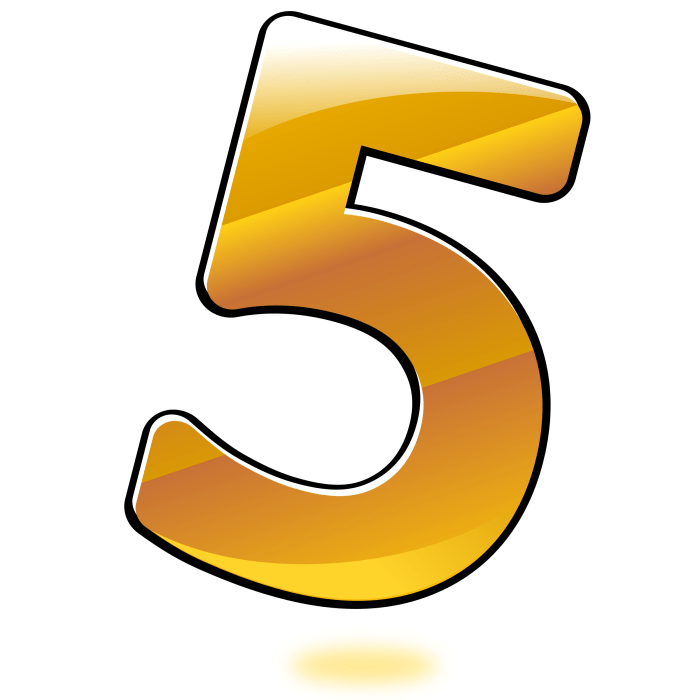What is 4.51 rounded to the nearest whole number? This question delves into the fundamental concept of rounding numbers, a technique widely used in various fields for simplifying numerical data and enhancing readability. In this comprehensive exploration, we will delve into the intricacies of rounding, examining its applications, and uncovering advanced rounding techniques.
Rounding numbers involves adjusting a given value to a more manageable or convenient form. It plays a crucial role in finance, measurement, and data analysis, enabling us to work with numbers more efficiently while preserving their essential meaning.
What is 4.51 Rounded to the Nearest Whole Number

Rounding numbers is a fundamental mathematical operation that involves approximating a number to a specified level of precision. It is commonly used to simplify calculations, improve readability, and enhance data analysis.
Understanding Rounding

Rounding a number means replacing it with a nearby number that is easier to work with or more appropriate for a given context. The rounding process typically involves identifying the place value to which the number should be rounded and then adjusting the digits to the right of that place value.
For example, rounding the number 23.45 to the nearest whole number involves identifying the whole number place value (the tens place) and adjusting the digits to the right of that place value (the ones place). In this case, the ones place digit (5) is greater than or equal to 5, so the tens place digit (3) is incremented by 1, resulting in the rounded number 24.
Rounding to Different Places
Numbers can be rounded to various place values, including the nearest ten, hundred, thousand, and so on. The specific place value to which a number is rounded depends on the context and the desired level of precision.
- Rounding to the nearest ten: 23.45 rounded to the nearest ten is 20.
- Rounding to the nearest hundred: 234.56 rounded to the nearest hundred is 200.
- Rounding to the nearest thousand: 2,345.67 rounded to the nearest thousand is 2,000.
Purpose and Importance of Rounding
Rounding is a valuable mathematical tool that serves several purposes:
- Simplification:Rounding can simplify calculations and make them more manageable. For example, rounding the number 123.456 to 123 simplifies subsequent calculations.
- Improved readability:Rounding can improve the readability of data by removing unnecessary decimal places or digits. For example, rounding the number 0.000123 to 0.0001 makes it easier to read and interpret.
- Data analysis:Rounding can be used to group data into meaningful categories or intervals. For example, rounding the ages of a population to the nearest decade can help identify age distribution patterns.
Rounding 4.51 to the Nearest Whole Number

To round 4.51 to the nearest whole number, we follow the rule that numbers with a decimal part greater than or equal to 0.5 are rounded up, while numbers with a decimal part less than 0.5 are rounded down.
Since 4.51 has a decimal part greater than 0.5, we round it up to the nearest whole number, which is 5.
Step-by-Step Instructions
- Identify the whole number place value (the tens place).
- Examine the decimal part (0.51).
- Since 0.51 is greater than or equal to 0.5, increment the tens place digit (4) by 1.
- The rounded number is 5.
Rounding Direction, What is 4.51 rounded to the nearest whole number
| Original Number | Rounded Number | Rounding Direction |
|---|---|---|
| 4.51 | 5 | Up |
| 4.49 | 4 | Down |
Applications of Rounding
Rounding is widely used in various fields, including:
- Finance:Rounding is used to simplify currency conversions, calculate interest rates, and estimate financial projections.
- Measurement:Rounding is used to approximate distances, weights, and volumes in everyday measurements and scientific experiments.
- Data analysis:Rounding is used to group data into meaningful categories or intervals, identify trends, and draw conclusions from statistical analysis.
- Loss of precision:Rounding can result in the loss of precision, especially when rounding to a large place value.
- Accumulation of errors:Repeated rounding operations can lead to the accumulation of errors, potentially affecting the accuracy of calculations.
- Rounding up:This technique always rounds the number up, regardless of the decimal part.
- Rounding down:This technique always rounds the number down, regardless of the decimal part.
- Rounding to a specific number of decimal places:This technique rounds the number to a specified number of decimal places, regardless of the rounding direction.
- Rounding up the number 12.34 to the nearest integer results in 13.
- Rounding down the number 56.78 to the nearest ten results in 50.
- Rounding the number 3.14159 to two decimal places results in 3.14.
Limitations and Potential Errors
While rounding is a useful tool, it is important to be aware of its limitations and potential errors:
Advanced Rounding Techniques: What Is 4.51 Rounded To The Nearest Whole Number

In addition to the basic rounding method described above, there are several advanced rounding techniques that can be used in specific applications:
Advantages and Disadvantages of Advanced Rounding Techniques
| Rounding Technique | Advantages | Disadvantages |
|---|---|---|
| Rounding up | Always results in a larger number | Can lead to overestimation |
| Rounding down | Always results in a smaller number | Can lead to underestimation |
| Rounding to a specific number of decimal places | Provides a consistent level of precision | Can result in loss of precision |
Examples of Advanced Rounding Techniques
FAQ
What is the rule for rounding numbers to the nearest whole number?
If the decimal part is 0.5 or greater, round up. If the decimal part is less than 0.5, round down.
What is 4.51 rounded to the nearest whole number?
5
